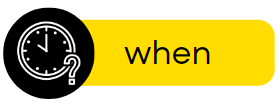Feature Overview: Item Views
Views in Yellow Dog Inventory provide unique perspectives on
your inventory items, helping you find the right information and make informed
decisions.

Item Management > inventory Items > View
dropdown

Use views to display relevant inventory item
inventory when reviewing item data.
There are 25 views available in Yellow Dog Inventory.
By design you will not have access to every view; only the ones that cater to your workflow.
By design you will not have access to every view; only the ones that cater to your workflow.
Below we will provide a brief explanation of each view. The
workflow each view is catered towards will be indicated as follows:
Black= Any Client Type
Blue = Food and Beverage
Green = Retail
Purple = Concessions
* Certain views were added in recent versions and may not
be available in select versions prior to 377.
- Classic: This is the generalized view that provides basic item information.
- Standard: Similar to the Classic View but does not provide on-hand quantities. This is intended for clients with large data sets to decrease loading times.
- Classic FnB: Geared towards Food & Beverage operations to provide the most relevant information for their workflows.
- All Stores: This shows on hands for each store that the user has access to.
- All Stands: Presents item details for stand items, including current on hand for each stand.
- Stand Items: Displays all items that are categorized as stand items (have been assigned to at least one stand).
- Activity: This shows event dates for the items: Created, First Received, Last Received, First Sale, Last Sale and Recent Session.
- Expiration: This view shows items with expiration dates set, how much is expired, and the oldest and newest expiration dates for each item.
- Locations: Provides location details and is the only view where locations can be assigned to items.
- Recipe/Kit/Batch Items Only: Displays all inventory items with a recipe attached along with the recipes they are attached to, their ingredients, cost, and how they behave in the system.
- Interface Codes (as of last sync): Shows all pertinent interface information as of the last sync and is highly dependent on your POS setup.
- Merchandiser: Allows you to filter items by dimensions.
- Parent/Child: Brings up all items with on-hand/other size relationships.
- Purchasing Eligible Sizes: Displays all item sizes that have been marked as available to purchase.
- Transfer Eligible Sizes: Includes all items sizes that can be transferred between stores.
- Vendor Products: Displays all item sizes that have associated vendor products.
- SKU, Vendor SKU and UPCs: Shows basic info, plus SKU, Vendor SKU & UPC.
- Attributes: Displays items that have an item attribute assigned.
- Web Items: Includes items that are push to and/or pull sales data from an interfaced web cart.
- Problem Items: Brings up items with issues. This view is a precursor to Watch Dog, and we recommend using Watch Dog which scans for a wider range of issues.
- Facility: Shows all items within a facility.
- Not Available To Store: Presents all items not available to the selected store.
- Ingredient Items: Lists items marked as an ingredient item.
- Count Sheets: Allows you to see the count sheet(s) assigned to each item.
- Interactive View: Allows you to directly edit select inventory item details. This view saves changes automatically, so take cautions when making any edits.
Related Articles
How To: View On-Hand Quantities
Quick access to on-hand quantities ensures speed, accuracy, and alignment across operation, making it easier to manage stock and support sound business decisions. All client types Access to the Item Management > Inventory Items screen and the ability ...Feature Overview: Merging Items
Merging items allows you to combine two or more duplicate items into a single item. This helps maintain clean, accurate inventory data. Note: Merges cannot be undone. Use this feature with caution. Open the Inventory Items screen. Select both items. ...Feature Overview: Stand Items - Item Types
Assigning an item type to stand items ensures the right items are counted in and out (items that are not assigned an item type will never appear in your count ins/count outs). Concessions The item type is set on the Size Behavior Tab. Figure 1. The ...Feature Overview: Item Lists
Item Lists are located under Item Management on the left-hand navigation menu. Item Lists help streamline your inventory workflows and can be used in many situations. Common uses include: Ordering Management: Allows you to quickly pull in frequently ...Quick Reference: Inventory Items Dropdowns & Filters
On the Item Management > Inventory Items screen, you’ll find several dropdown filters and options to help refine your search and display the specific item details you need. Views: Views provide different perspectives on your inventory items, making ...
Popular Articles
How To: Find Your Yellow Dog Inventory Version
Understanding which version of Yellow Dog Inventory you're using is essential when exploring new features, as some enhancements and functionalities are specific to certain versions. All client types can benefit from knowing their Yellow Dog Inventory ...Feature Overview: Par & Re-Order Points
Par levels and reorder points help streamline purchasing in Yellow Dog. Par level is the ideal quantity to keep on hand. Reorder point is the minimum quantity that triggers reordering. You can update par and reorder points in the following locations: ...Tips & Tricks: How do I download and install drivers for my Zebra Printer?
**As a note: Admin rights will be required to complete this task. If you do not have admin rights on your PC, please contact your IT for assistance** ZD410 Desktop Printer Support Site 1. Navigate to Drivers: 2. Select Zdesigner V. 5 Driver for ...How To: Swap the On-Hand/Parent Size (Edit Base Unit)
When managing items with multiple sizes, it’s essential to configure them correctly. The on-hand/parent size should always represent the base unit or smallest measurement, while additional sizes should be created for purchasing or counting sizes. If ...FAQs: What are Bins?
Question: What are Bins? Answer: Bins are optional location identifiers that specify exactly where an item is stored. You don’t need to create bins in advance. You can assign them: In the Stores tab of the item editor Through a Balto import Bins ...